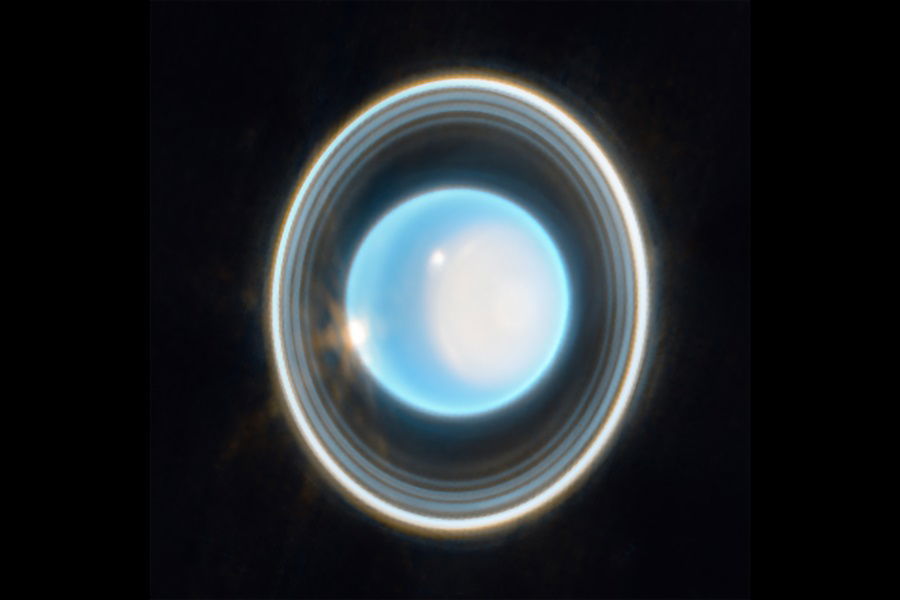The ice giants remain some of the most fascinating destinations to explore in our solar system. Uranus, in particular, has garnered significant interest recently—especially after the 2022 Decadal Survey from the National Academies named it the highest priority destination for planetary science missions.
However, as of now, there isn’t a fully developed and planned mission ready to take advantage of the multiple launch windows available in the 2030s. This delay might actually be beneficial. A new launch system coming online could fundamentally change the overall mission design, offering new possibilities for exploring Uranus.
### The Promise of Uranus Exploration
Uranus is one of the least explored planets in the solar system. The last probe to visit was Voyager 2, which performed a flyby over 40 years ago. Neither Uranus nor its ice giant cousin Neptune have ever been orbited by a dedicated spacecraft, nor have they had a consistent mission presence in their systems. This makes them unique among the planets—being the only two without detailed, close-up study to date.
The lack of exploration is not due to a lack of interest. Uranus presents a host of intriguing mysteries: it rolls on its side, has a highly unusual magnetic field, and hosts numerous moons that could potentially hide subsurface oceans beneath icy crusts. Additionally, planets like Uranus represent some of the most common types of exoplanets found so far, so exploring it up close would greatly enhance our understanding of similar worlds beyond the solar system.
### The Challenge of Distance
The main obstacle to exploring Uranus is its extreme distance from Earth. Uranus orbits about 19 times farther from the Sun than Earth does. Voyager 2 took more than nine and a half years to reach the planet—and it didn’t even slow down to enter orbit.
Previous mission studies, including those conducted for the decadal survey, envisioned using a Falcon Heavy rocket combined with several gravitational assists to reach Uranus. Even then, the journey would last over 13 years. Such extended travel times increase mission costs, both operationally and financially. They also risk losing key mission personnel over the long duration, or encountering budgetary and organizational disruptions—challenges common in NASA’s recent history.
### Enter SpaceX’s Starship
This is where SpaceX’s Starship comes in. After a series of testing challenges earlier in the year, Starship has now demonstrated a string of successful tests, signaling it is coming into its own as a powerful launch system.
Starship’s increased lifting capability opens new doors for missions like the Uranus Orbiter and Probe (UOP) proposed by the Decadal Survey. But two features stand out as particularly promising for such a mission:
1. **In-Orbit Refueling:** Starship is designed to be refueled in orbit, meaning it doesn’t need to carry all its fuel from Earth at launch. This ability can significantly shorten transit times by enabling higher-velocity trajectories. Although this capability is still being tested, it holds the promise of drastically cutting travel durations to distant planets.
2. **Aerobraking Shield:** Researchers from MIT presented a paper at the IEEE Aerospace Conference investigating the use of Starship itself as an aerobraking shield. Starship’s heat shield is designed to survive reentry on Earth and Mars, and with some modifications, it could also withstand the intense heat generated when slowing down in Uranus’s atmosphere.
Instead of separating from the probe after launch, Starship could accompany the UOP spacecraft to Uranus and use its thermal protection system as an air brake. This approach would slow the probe sufficiently to enter orbit around Uranus.
### Cutting Travel Time in Half
The combination of in-orbit refueling and using Starship as an aerobraking shield could cut the trip time to Uranus from over 13 years to just six and a half years. Remarkably, this fast transit would require no gravity assists from other planets.
While taking a Starship along would add costs upfront, the reduced travel time would significantly lower operational expenses, and reduce risks related to long mission durations.
### Looking Ahead
Despite these exciting prospects, both UOP and Starship’s use in such a mission remain far from reality. UOP is still in the conceptual phase, and Starship has yet to demonstrate aerobraking capabilities at an ice giant.
Moreover, funding and organizational support for UOP remain uncertain amid NASA’s current challenges. Missing the 2030s launch windows would push the next opportunity into the mid-2040s—meaning nearly 70 years could pass between missions to Uranus.
For all planetary scientists and space exploration enthusiasts, it is crucial that the agencies involved find a way to move forward with this mission—whether or not it employs Starship technology. A return to Uranus promises to unlock secrets about our solar system’s origins and the nature of distant, icy worlds.
—
*Written by Andy Tomaswick / Universe Today*
https://knowridge.com/2025/10/starship-could-cut-the-travel-time-to-uranus-in-half/



